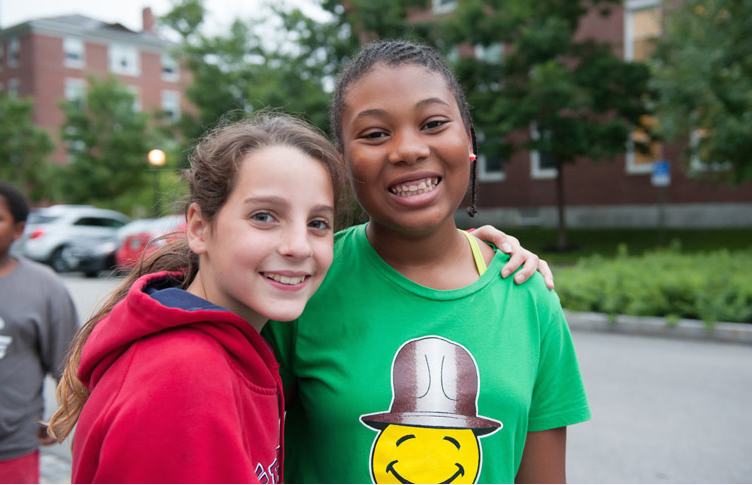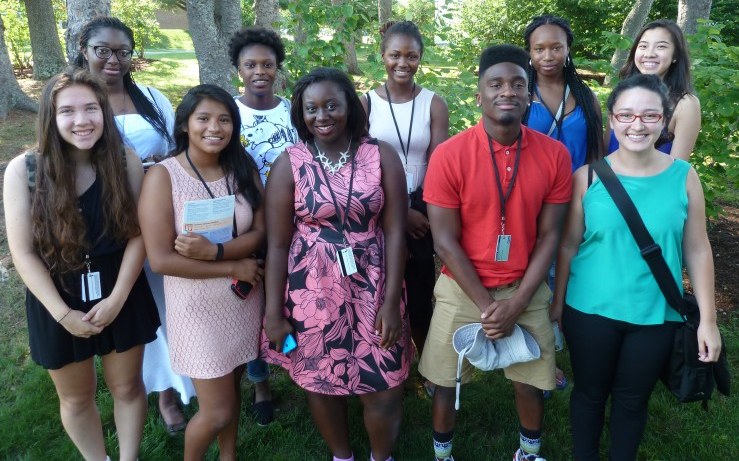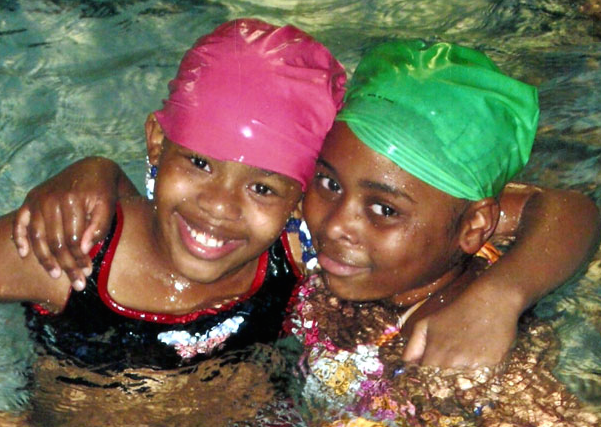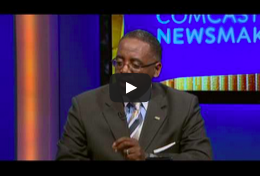June 2016 Member Spotlight: Bowdoin Bound
SNAPSHOT:
Elevator Speech: Launched in 2002, Bowdoin Bound is a small, regional nonprofit organization that partners with Bowdoin College (Brunswick, ME) to expand educational access opportunities through summer programming for high achieving, low-income middle school and high school students of color from inner city Baltimore. In 1802, Bowdoin College enrolled its first eight students, and then President Joseph McKeen urged them to work “for the common good,” a phrase that came to epitomize Bowdoin’s sense of mission. When alumnus Daniel Spears founded Bowdoin Bound in 2002 with its first cohort consisting of fifteen 5th graders, the College drew on this mission to provide in-kind donations through dorm space, the dining hall, scholarships, and invaluable staff time for workshops presented by representatives from the Offices of Admission and Student Aid. Over the past 15 years, Bowdoin Bound has grown to support over thirty-five middle and high school students annually, and remains a commitment shared between the college and volunteers.
NPEA Member Type: Organizational Member
Interviewee: Daniel Spears, President
Contact Information: bowdoinbound@yahoo.com, (410) 527-1076
Location(s): Based out of Baltimore, MD, with programming primarily occurring at Bowdoin College in Brunswick, ME.
Year Founded: 2002
Staffing: 3 primary, unpaid staff members, and 5 seasonal volunteers.
Students Served: Currently, Bowdoin Bound serves over 35 middle school and high school students annually.
“About Us”: Who We Are, Mission Statement, Student Stories, News, Photo Gallery
Get Involved: Donate, Student Paperwork, Contact Us
Main Website: https://bowdoinbound.com/
Social Media: Facebook, Twitter, LinkedIn
INTERVIEW:
Click on the links below to learn more, or scroll down to read the full interview.
- Overview
- History
- Future Plans
- Data Use
- Partnerships
- Challenges
- Professional Development
- NPEA Experience
Q: Please provide a brief overview of your organization, Bowdoin Bound.
A: The focus of Bowdoin Bound is to increase the exposure of Baltimore’s inner city youth to the educational opportunities that exist beyond the confines of their respective communities. Our staff begins by working with four to five feeder schools in the Baltimore area to identify potential Bowdoin Bound participants. We build a cohort of thirty-five rising 5th and 6th graders, and then work with those students each summer all the way through high school graduation (at which time they become alumni). Each summer, we also address any attrition in the program by enrolling new students in grades 5-11 to replenish the cohort. Bowdoin Bound participants attend a week-long program that takes place each summer at Bowdoin College in Brunswick, ME. Middle school students attend a day camp run by the college that focuses on both athletic and educational activities, while the high school students focus on the college research and application process through college visits and a series of tailored workshops. All of these students live in the Bowdoin College dorms and eat meals in the dining hall. The goal is to replicate the college experience as best we can, and to empower these students to reach higher in their post-secondary goals. Back to top.
Q: Please share a little more about the history of Bowdoin Bound. What significant events and/or people have shaped the mission and goals of your organization?
A: I graduated from Bowdoin College in 1981. My undergraduate experiences at Bowdoin were very meaningful and impactful in my life, and from the moment I graduated I was always interested in giving back. Professionally, I started working in the music industry, at first through radio, and then for the past 28 years I’ve worked with BMI (Broadcast Music, Inc.) to help songwriters and publishers collect royalties for their work, most recently through my work as Vice President of Licensing and Industry Relations.
About 16 or 17 years ago, Bowdoin College launched initiatives aimed explicitly at diversifying its student body and expanding educational access opportunities for low-income students. At the time, I was chair of the Bowdoin alumni network in Baltimore, and most of our focus was on helping the college by conducting admissions interviews in the area. I started working with Erby Mitchell, who had been hired as the multicultural admissions recruiter at Bowdoin (he currently serves as Director of Admissions at The Loomis Chaffee School, and soon he will be joining The Hotchkiss School as Dean of Admission and Financial Aid). Erby is from the projects in Brooklyn, and his energy and passion for this work is infectious. The two of us would go into high schools in Baltimore and speak with their top performing juniors and seniors, basically all of whom flatly told us they could not fathom leaving the Baltimore area nor were they sure whether or not they wanted to go to college and where. We realized very quickly that—with few exceptions—we were talking to these students too late.
At the same time, my son happened to be playing Little League on a team coached by Ed Cozzolino. Ed was the principal of Brehms Lane Elementary School in Baltimore (he has since retired), and he was very interested in providing additional educational access opportunities for his students. I approached him about piloting a program where twelve to fifteen 5th graders would travel to Maine to attend Bowdoin Summer Day Camp in the summer. He agreed, and then we worked with Erby and Bowdoin to secure scholarships, dorm space, and food from the dining hall. In time, educators Michelle Perzinski and Megan Bovill joined our work each summer, which was invaluable because they work as teachers in the Baltimore public school system during the academic year. This enabled us to grow the program to serve 35 students annually, and allowed me to create the tailored programming we now run for high school students as they pursue post-secondary options.
Q: Speaking of growth, please share what plans Bowdoin Bound has for its future. What next steps and goals are you focused on?
A: Bowdoin Bound is an all-volunteer organization funded solely by private donations (often from just a few friends and family members) and in-kind donations from Bowdoin College, so our resources are very limited. We do have a strategic plan in place, and we have been following it for the last 14 years. We are interested in growing our financial resources in order to hire part- and/or full-time paid staff that could better support Bowdoin Bound students, especially during the academic years between summers when our current unpaid staff is less able to focus on this support (due to our primary occupations and other daily commitments). However, we are hesitant to pursue foundation and/or government funding that would likely be both less discretionary and more fraught with reporting requirements. This is a concern because we want that initial, first staff member’s time to go primarily to student support (rather than reporting), and we also want to maintain discretionary funds that we can use to go directly to students (i.e., to help our participants access prom dresses, extra-curricular opportunities at their schools, and so on). We are continuing to explore these issues, and would welcome any insights from other NPEA members who may have gone through similar transitions in their development and sustainability initiatives.
Q: NPEA is committed to creating a culture of data with and for its members throughNPEA Data Counts. In what ways does Bowdoin Bound currently use data to inform decisions and programming?
A: Most of the data we currently collect is qualitative, which is due to our limited staff time and resources. We do monitor outcomes for our students and we are proud of the great qualitative stories we can share about our participants. We use Microsoft Office and cloud software to maintain and further develop the annual curricula for the program. We do believe in formative assessment, so though it is qualitative, each year we are sure to tweak programming based on our experience in previous years. In addition, I strive to keep up with current research in the educational access field. In particular, I am interested in how to better support “B” students who have tremendous potential, but are often left with significant financial aid gaps when they are admitted to the colleges that could arguably better support them academically and socially than the lower-cost colleges they end up attending.
Q: Speaking of partnerships and collaborations, how has Bowdoin Bound developed partnerships with schools, college access programs, organizations, universities, and others to further the organization’s work?
A: We have a strong partnership with Access Exeter, a summer program for rising 8th and 9thgraders at Phillips Exeter Academy. We have sent more than a dozen students there over the years, all of who received full scholarships. We also maintain a partnership with College Access Now, a college prep organization in Seattle that works with first generation high school students. They send two students to Bowdoin Bound every summer. And of course, we have a very close working relationship with Bowdoin College. More recently, we are proud to have sent five of our Bowdoin Bound alumni there over the last eight years.
Please email bowdoinbound@yahoo.com if you are interested in learning more about becoming a community or school partner.
Q: What challenges has your organization encountered in doing college access work? What has your organization learned from these experiences?
A: Our biggest challenge is attrition, which is primarily due to the fact that we do not have paid employees who are making sure that the students remain engaged with the program. Instead, we rely on our relationships with families, who are understandably not always able to provide the communication and support system the students need to stay on track with Bowdoin Bound. What we have learned is that the earlier a student starts in our program and is able to persist through it, they consistently attain greater success in pursuing high quality post-secondary options. Thus, we work hard to build strong cohorts early, and we are also committed to exploring ways to expand the reach of our program through additional funding and staffing. Back to top.
Q: What, if any, professional development resources has your organization found to be helpful that you might encourage other NPEA members to consider? Why?
A: Bowdoin Bound is a member of the First Generation Affinity Group, which is run by Baltimore Educational Scholarship Trust (B.E.S.T.), who is also an NPEA member. The group meets about four times per year, and is focused on discussing academic and financial aid resources for first generation college students. These meetings are wonderful networking and learning opportunities.
Q: How has your organization benefited from membership in NPEA?
A: Bowdoin Bound has been a member of NPEA for over five years, which has given us access to a pretty incredible network of organizations and schools in the Baltimore area. We attended the Regional Meeting in Baltimore in 2013, which was a really amazing event that provided great professional development for our staff. NPEA’s staff also helped us to connect with organizations in Baltimore for individual meetings, which were very helpful. Lastly, we also routinely enjoy learning from the Newsletter and Digests, and we are eager to attend upcoming NPEA conferences and webinars. Overall, NPEA has been a great resource for learning about other organizations with similar goals so that we can share best practices.









